What type of transformation is this?
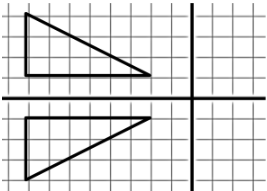
Reflection-->Across the x-axis
What sequence of transformations could be used to perform this transformation?
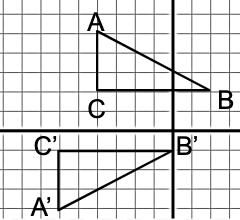
Reflect across x-axis
Translate right 2, up 1 using (x, y)-->(x + 2, y + 1)
Are these two triangles similar?
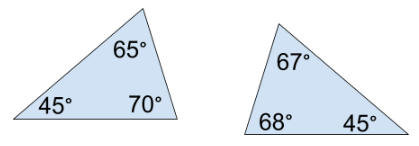
No, they do not have the exact same angles.
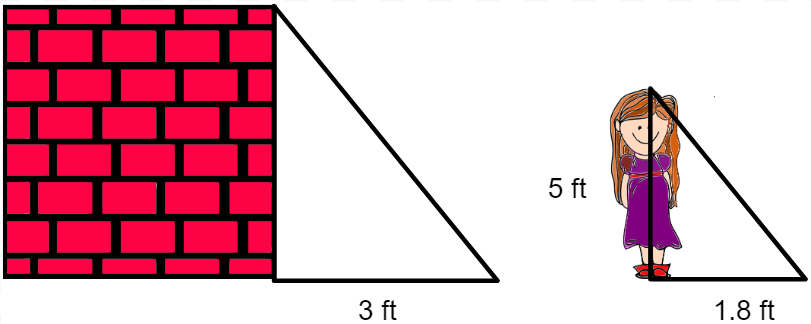 What is the height of the wall?
What is the height of the wall?
8.bar3
Point P(2, 3) was translated using the rule
(x, y)-->(x + 2, y - 4). Where would you find the point P'?
(2, 3)-->(2 + 2, 3 - 4)-->(4, -1).
If the pre-image and image have a different perimeter (AKA side lengths have changed..) what type of transformation occurred?
Dilation-->The size is different.
What sequence of transformations could be used to perform this transformation?
Reflect across the y-axis
Dilate with r=1/2
Translate down 2 left 1/2
Are these two triangles similar?
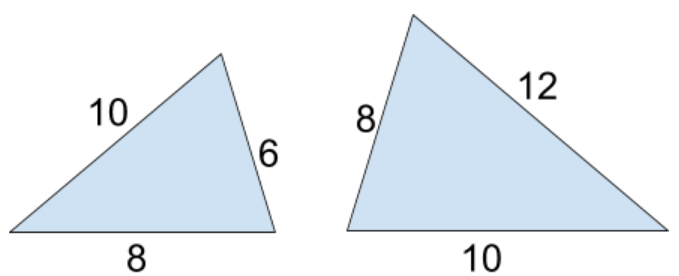
No, their sides are not in proportion.
ABCD ~ WXYZ. What is the measure of ∠x?
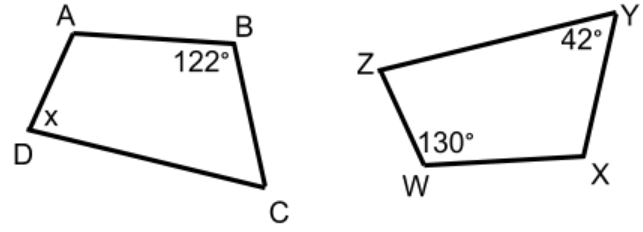
∠x = 66°.
Since the shapes are similar they have the exact same angles. Therefore ∠A = 130° and ∠C = 42°. Since all angles of a quadrilateral add up to 360°.
360-130-42-122 = 66°.
Amanda made two triangles that are similar but not congruent, what type of transformation did she do?
Dilation-->The size changed.
What type of transformation would give a result from the following figure?

Translation left or right.
What transformation could be used?
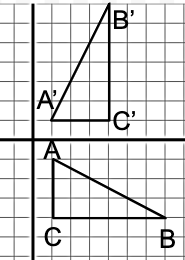
Rotate 90°
Isaiah has triangle RST with side lengths of 5 in, 8 in, and 7 in. He rotated triangle RST 90° about the origin then dilated triangle RST with a scale factor of r=1/3 to make image R'S'T'. Would the pre-image and image be:
-Similar and congruent
-Similar but not congruent
-Neither similar nor congruent
Similar but not congruent. A dilation does not make congruent figures.
In the figure below ABDF ~ GCDE. What is the perimeter of rectangle ABDF?
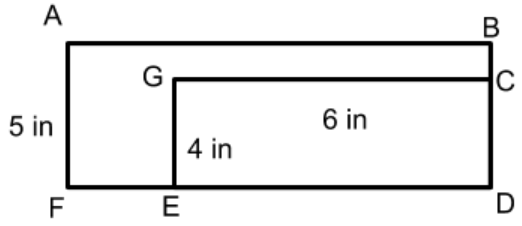
The perimeter of rectangle ABDF is 25 in.
Triangle LMN has a perimeter of 14 in and area of 60 in the triangle was dilated with a scale factor of r = 3. What would be the perimeter and area of triangle L'M'N'?
Perimeter = 14 x 3 = 42
Area = 60 x 9 = 540
What is the sequence of transformations?
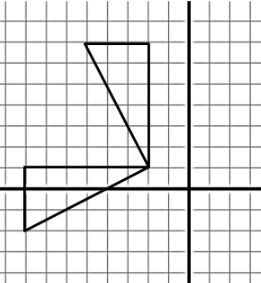
Rotation and translation
Pre-image X was reflected and translated. Which of the following images could be the result?
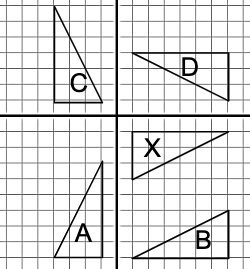
Triangle D.
Reflected across the y-axis.
Translated up 5 right 8
(x, y)-->(x+8, y+5)
Which two triangles below are similar?

Triangle B and C.
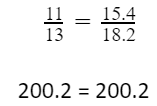
Triangles ΔABG, ΔACF, and ΔECD are all similar. What is the measure of ∠x?
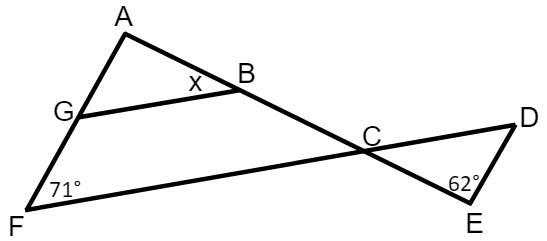
∠x = 47°.
Point P'(4, 6) is the result of a reflection across the y-axis then a dilation with r=2 about the origin. Where was the pre-image point P?
(-2, 3)
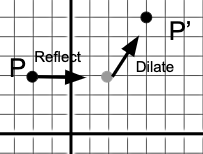
Square ABCD was reflected across the x-axis. Point B' is located at (-2, -5) where would you find point B before the reflection?
(-2, 5) The reflection would change the y-value of the point.
If point A is at (0,1), is rotated 90 degrees, reflected across the y-axis, and then translated right 2, up 1, where is A'?
(3, 1)
Anne wants to know if triangle ABC is similar to triangle ACD. If they are similar what scale factor would Anne use to show their similarity?
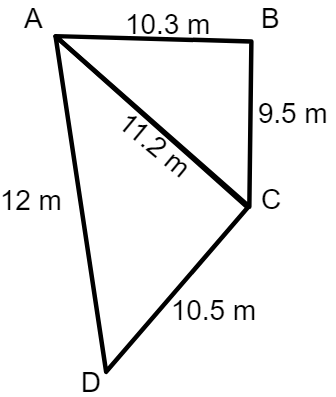
They are not similar.
AD -> AC, and DC->CB so...
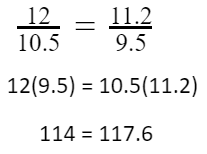
In the diagram below WXYZ ~ W’X’Y’Z’. What is the perimeter of WXYZ?

b=46, so the big rectangle has dimensions of:
135 x 54....135+135+54+54=378 ft.
Point G' is located at (3,0). It was first translated left 4, down 1. Then, it was reflected over the x axis. Where is G? (HINT: go backwards)
(4, -2)